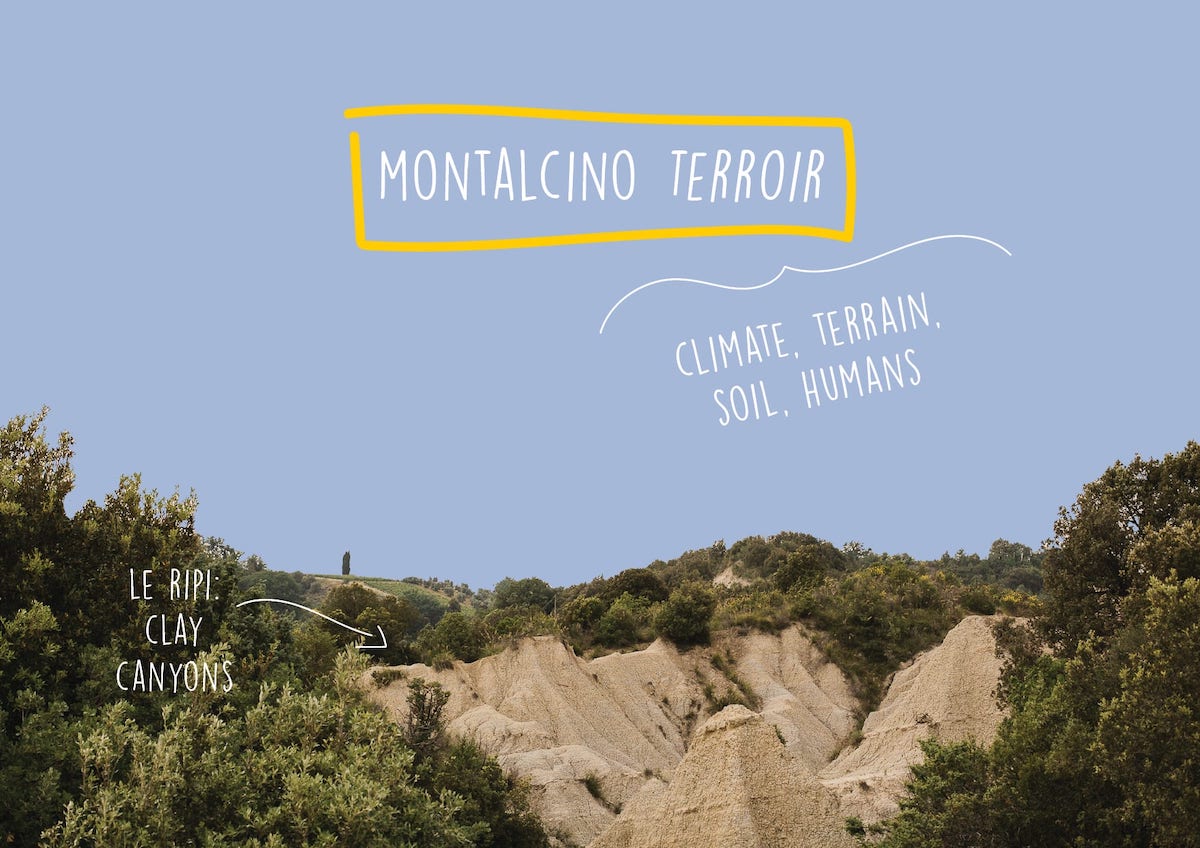
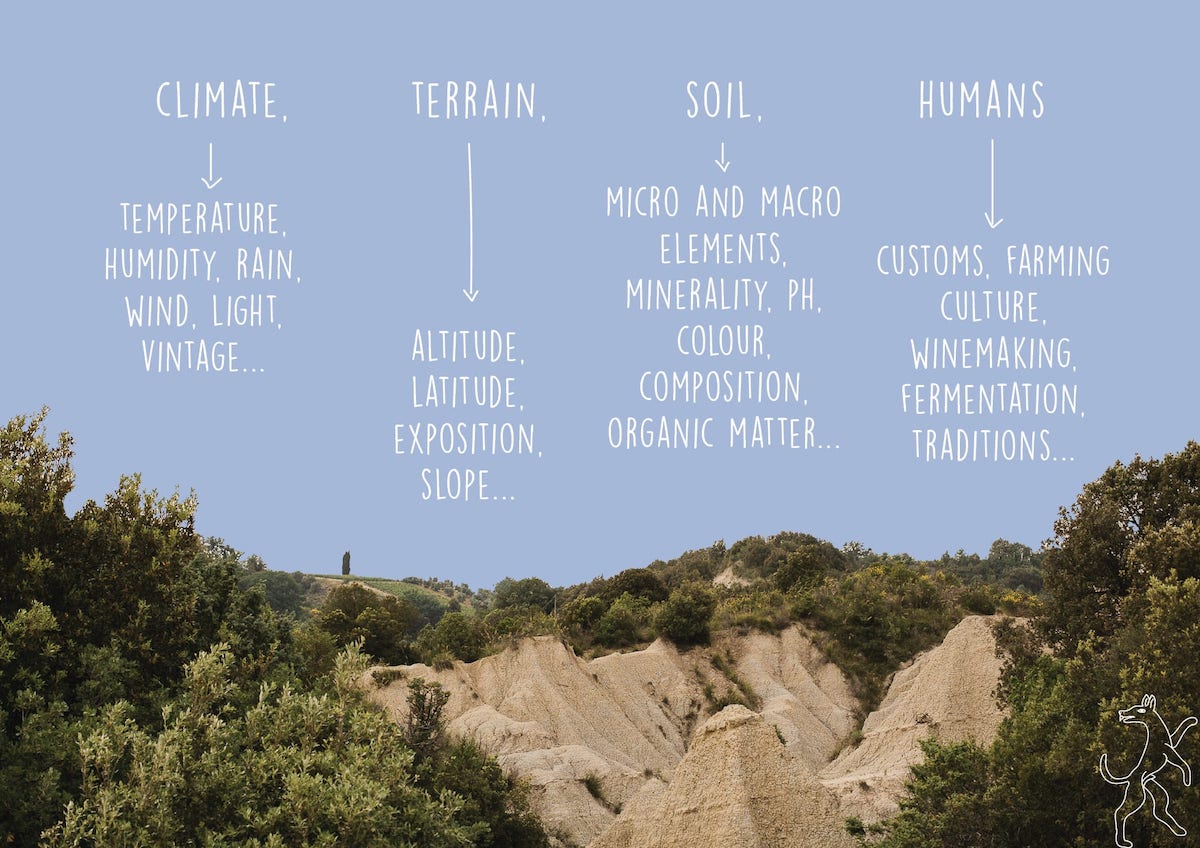
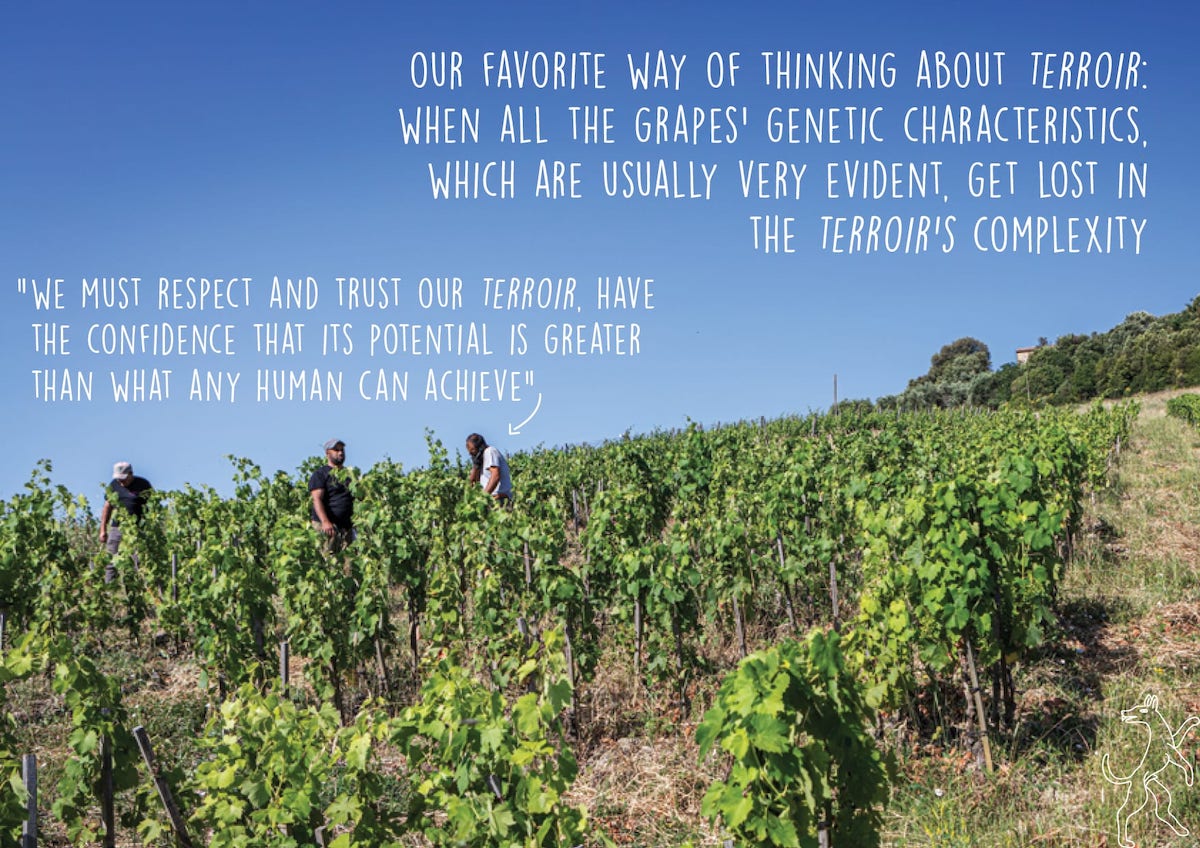
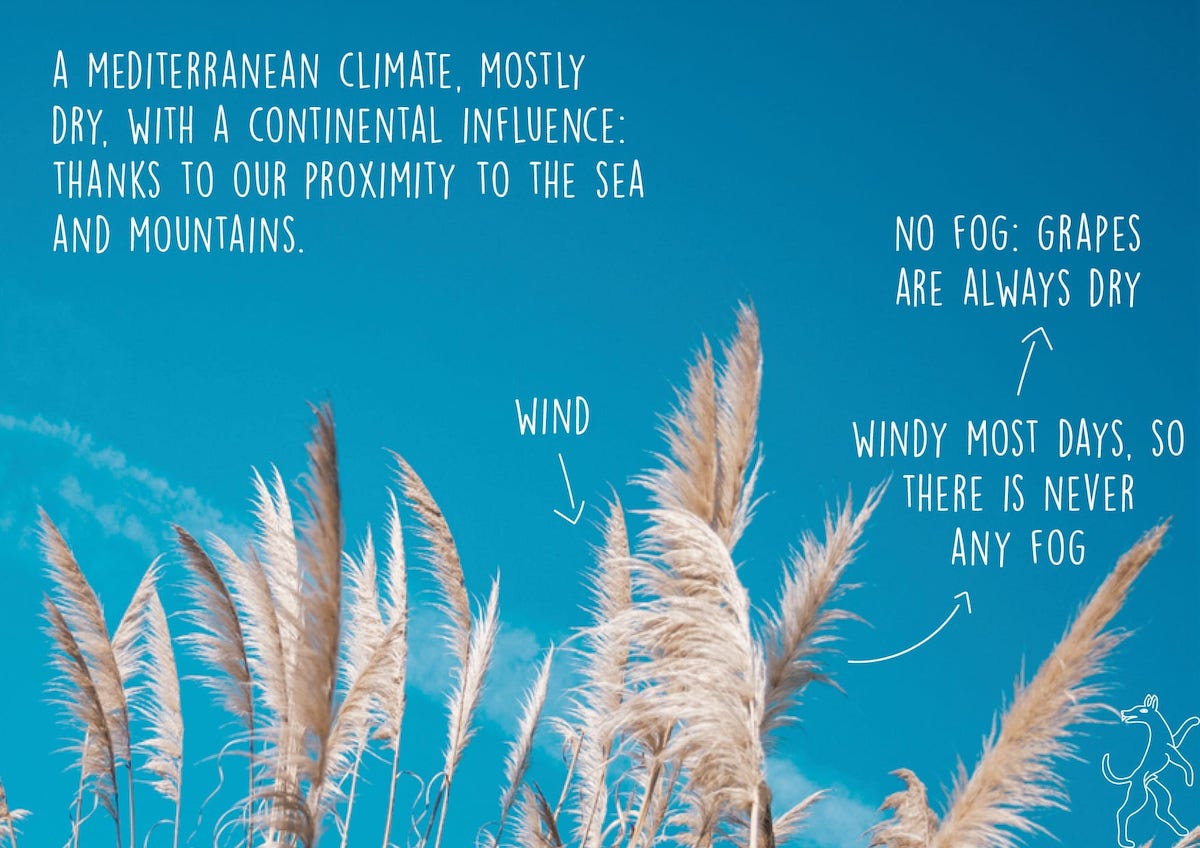
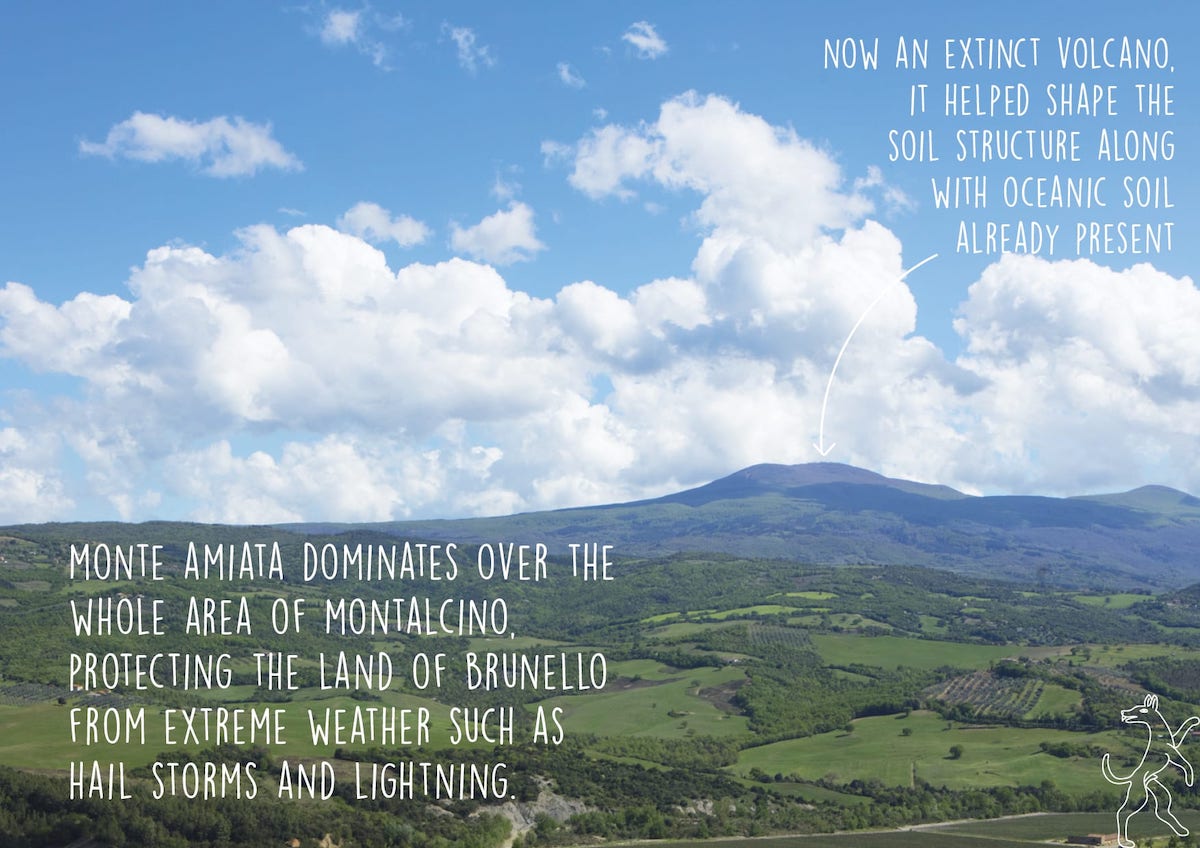
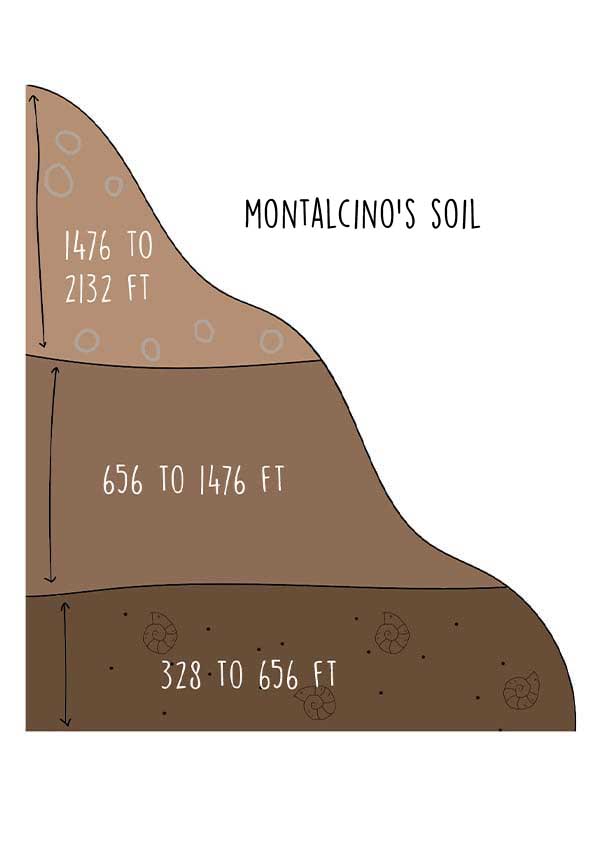
1st ring
Rich in skeleton, lots of stones like “Galestro” and volcanic rock from Monte Amiata, all mixed with oceanic soil, it is a high drainage terrain.
2nd ring
Ancient & poor soil, formed by oceanic clay, limestone and marna*. It yields less than other terrains but has a great personality, due to the soil’s age. Most wineries in Montalcino are found in this section.
3rd ring
Alluvial soils with a high quantity of sand & silt. Formed as a result of erosion which carries soil from the various eras, making the terrain quite varied.
*a lime-rich mud which contains clay and silt
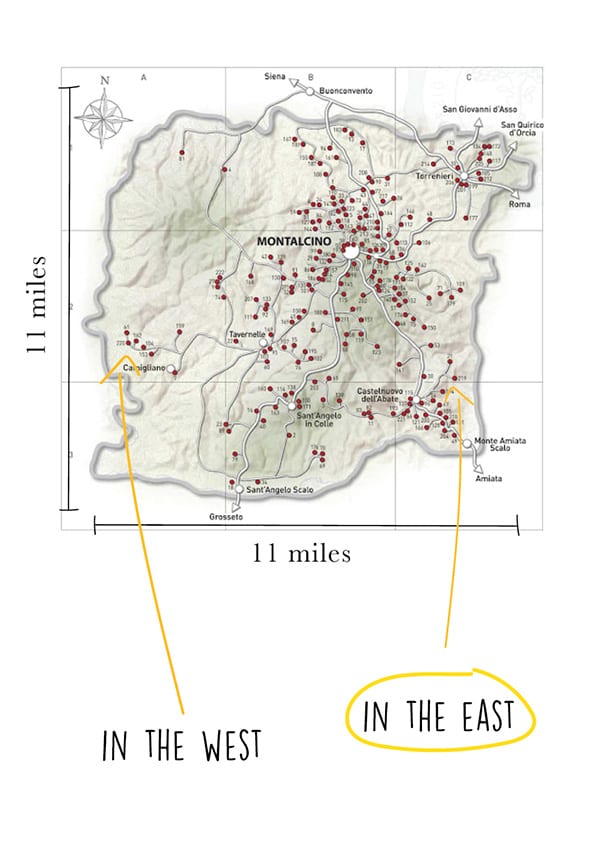
Montalcino’s area of production can be divided into 4 slopes, known as NW, NE, SE and SW, which all have different microclimates. Podere Le Ripi’s wine production is split between two of these subzones:
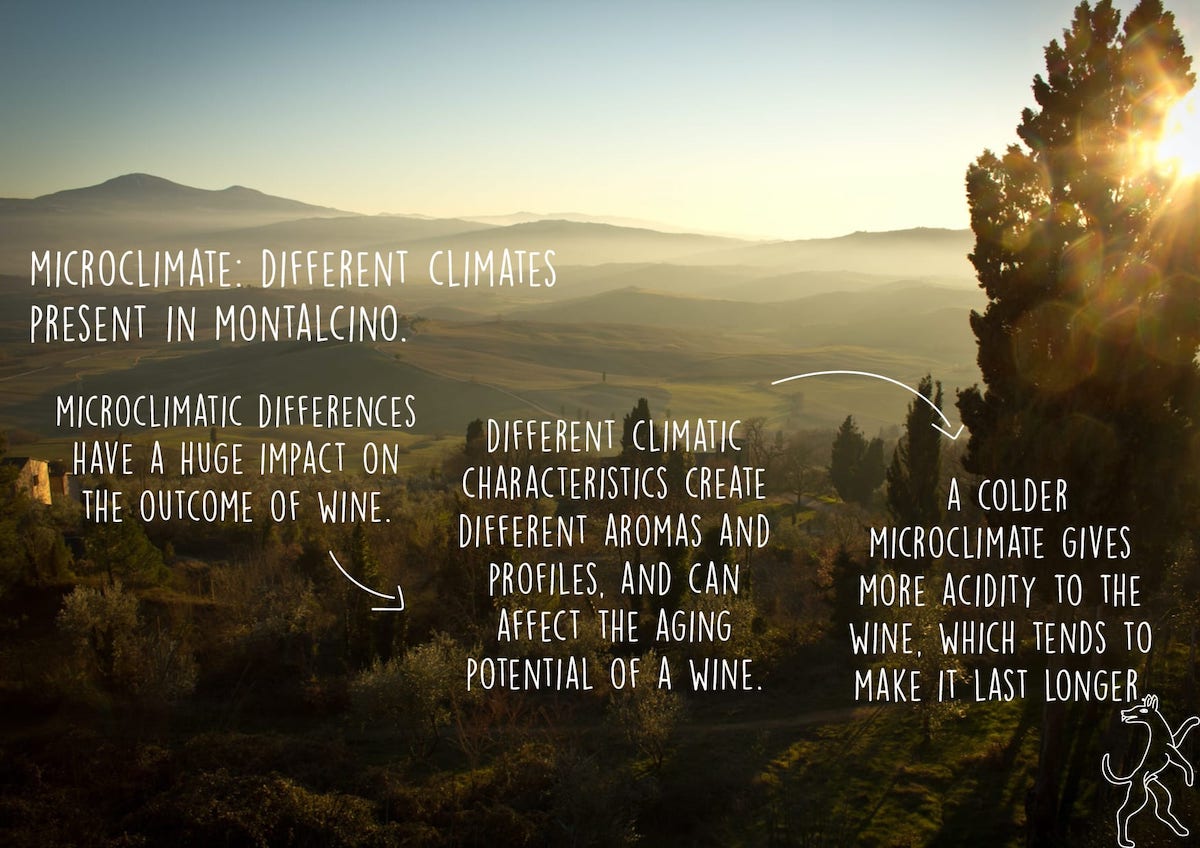
This slope’s positions means it is exposed to less hours of sunlight during the day, all the direct sunlight occurs in the afternoon and late hours of the day. It is characterized by cooler weather and more rainfall, which creates fresh and thin Brunello di Montalcino, resulting elegant even in hot vintages. Due to the fact that it is mainly covered in forests, there are only a few producers: Castiglion del Bosco, Le Potazzine, and Podere Le Ripi’s most recently acquired tenuta are here.
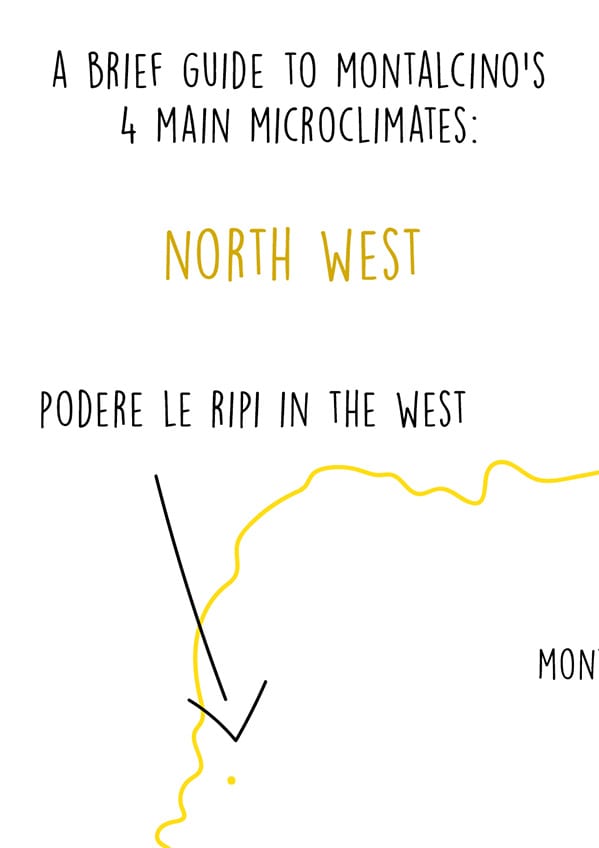
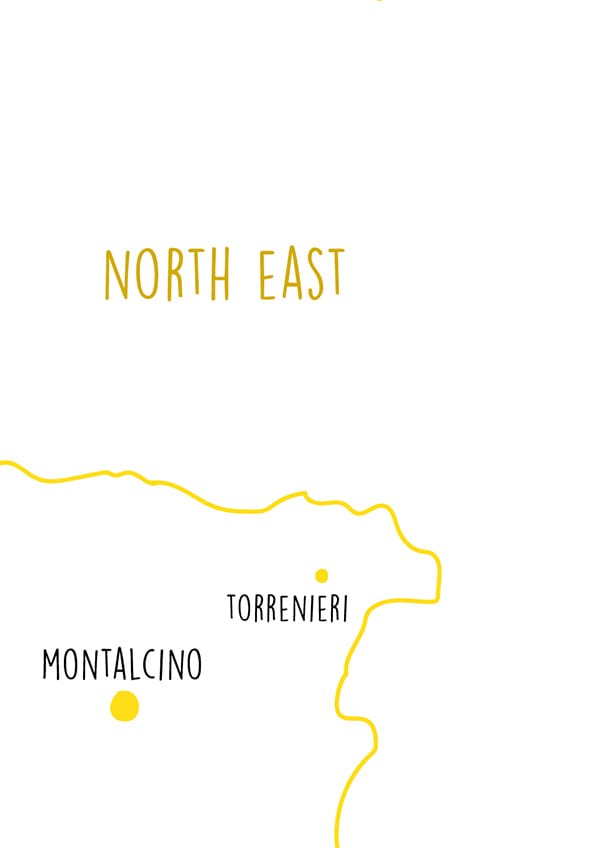
A cooler climate where grapes ripen later in the harvest season, around mid October. There is higher humidity and rainfall as well as more wind. Characterized by elegant and fresh wines, which can have harsher tannins. Capanna, Fuligni, Altesino, Val di Cava, Siro Pacenti and Baricci are a selection of producers found in this area.
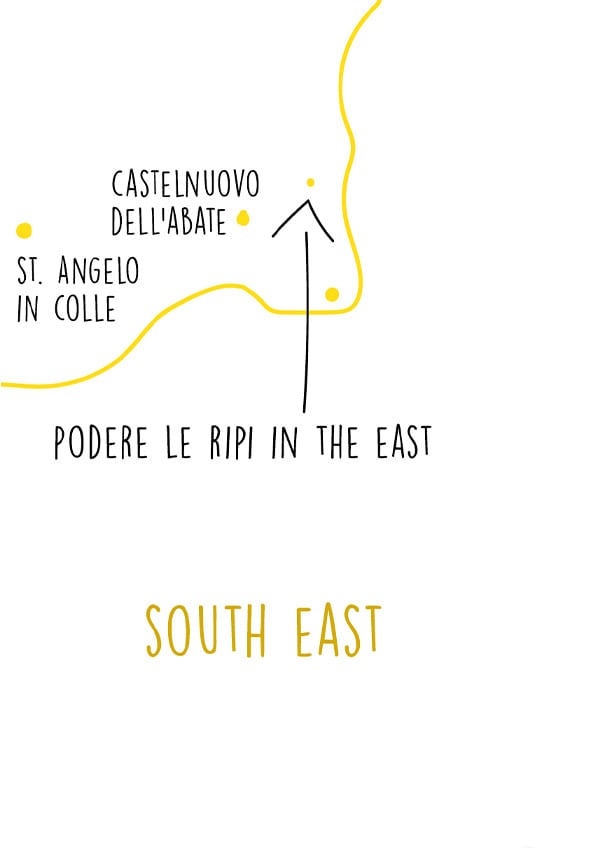
Characterized by long days full of sunlight and strong, constant wind. It is much drier and hotter compared to all other slopes, which makes Brunello di Montalcino produced in this area darker in pigment and saltier. Podere Le Ripi’s original tenuta is found here, as well as Biondi Santi, Mastrojanni, Pian dell’Orino.
The warmest slope, where big and strong wines with slightly less acidity are produced. It isn’t very steep, compared to all other slopes, which makes it much easier to mechanize production. Large scale producers can be found here, like Banfi, Col d’Orcia, Castelgiocondo and Argiano. The climatic conditions are characterized by hot winds from the sea and very low rainfall.
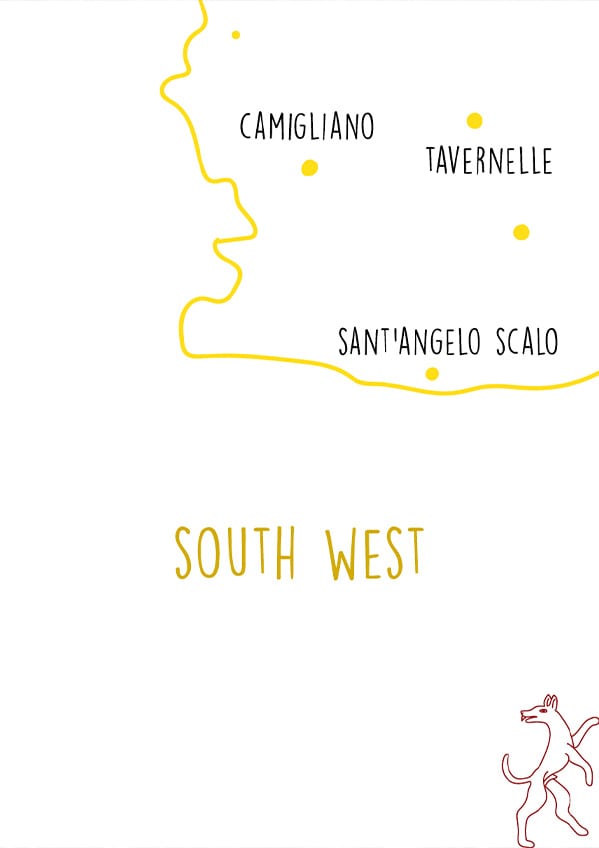
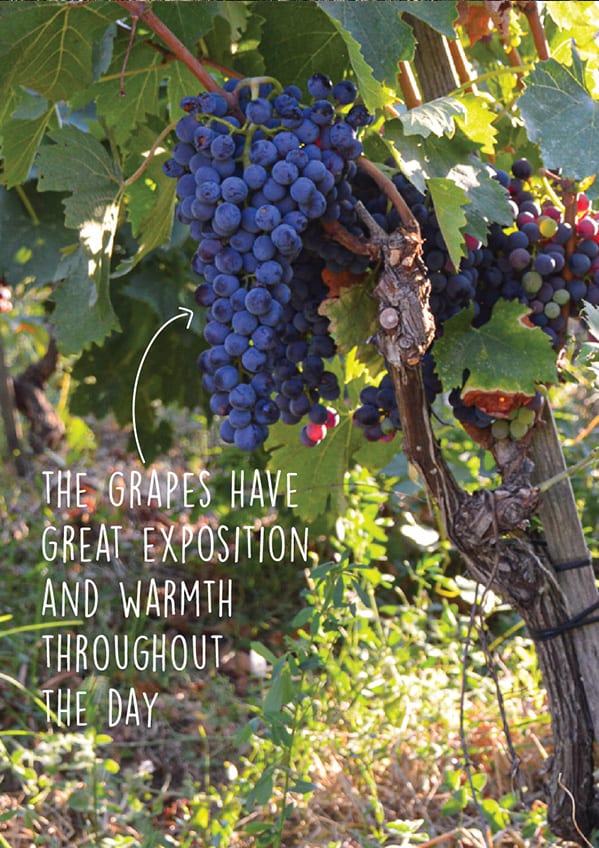
Over on the South East slope of Montalcino is where we have most of the production, near the town of Castelnuovo dell’Abate and the famous Abbazia di St. Antimo.
The climate here is one of the best out of the whole Montalcino area, from the first rays of sunlight in the morning, which keep the grapes nice and dry.
Here we produce Lupi e Sirene and Amore e Magia Brunello di Montalcino, Amore e Follia IGT and Bonsai (our most special wine).
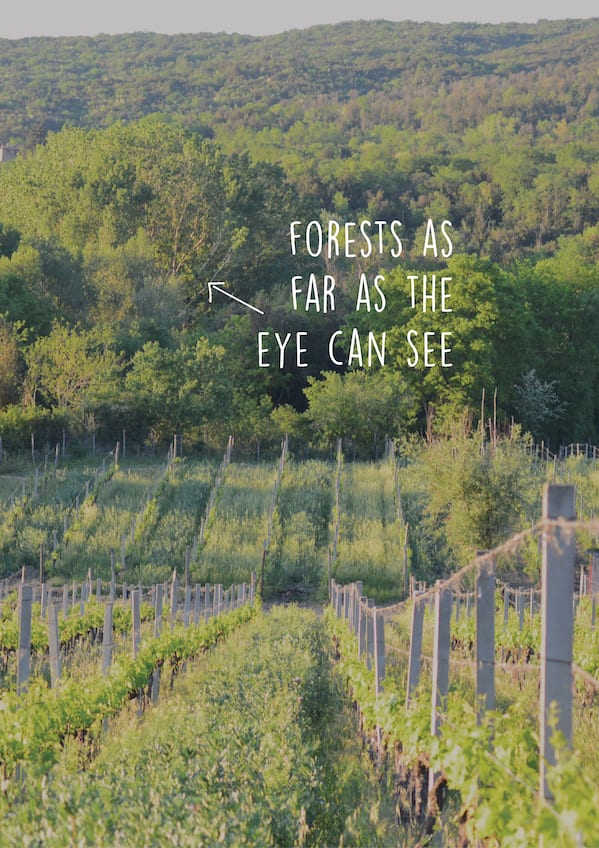
The North West side is the wildest part of Montalcino, with few producers and many forests. Due to the different sun exposition, the wines result fresh, thin and elegant during the hotter vintages too.
On this slope we produce Sogni e Follia Rosso di Montalcino and Cielo d’Ulisse Brunello di Montalcino DOCG. Our new orange wine, Canna Torta, from two native white grape varieties: Trebbiano and Malvasia is made in terracotta anforas.
Irrigation can have negative impacts on the end product, by giving the wines too much conformity throughout vintages.
In Montalcino, especially those who practice biodynamic agriculture like us, making wine that embodies the climatic peculiarities of each vintage (excessive or too little rain, heat, light, etc.) is what we strive to achieve.
A wine that represents its terroir.
*DOCG: Denomination of origin that has been controlled and guaranteed by a certified body
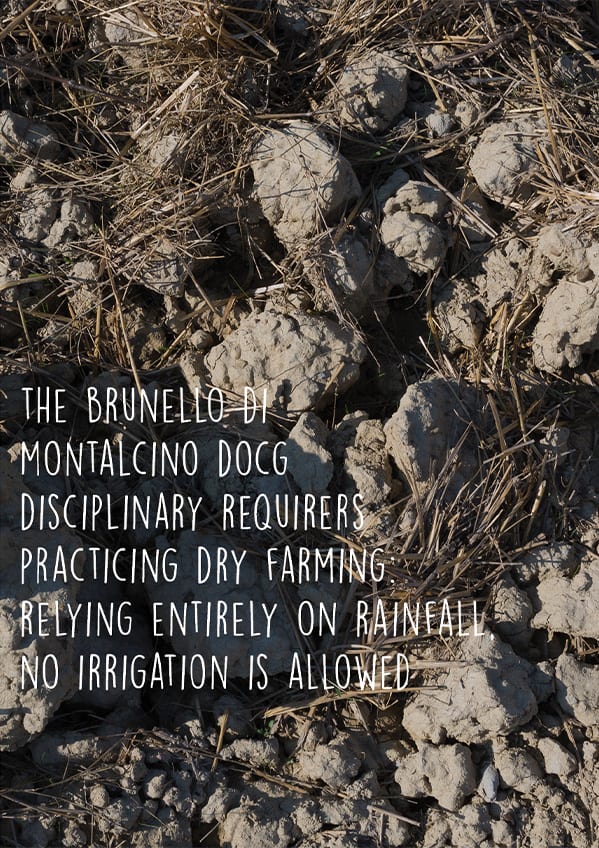
Book your visit
Fill the form and we will contact you soon!